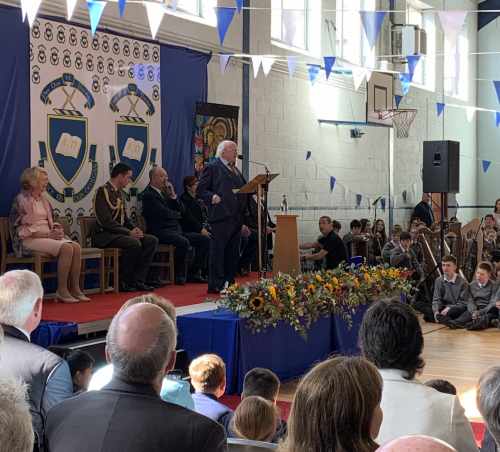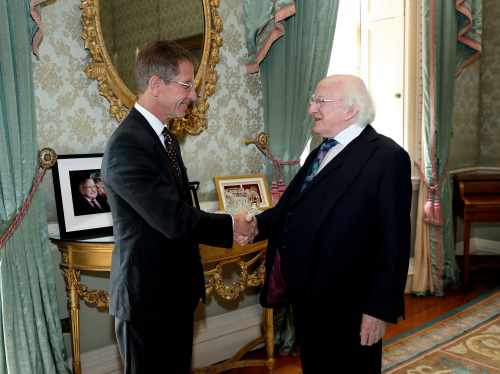Sabina Higgins speech at an event organised by the Headford Lace Project
St Fursa's Hall, Galway, Saturday 21st September 2019
I am delighted to have the opportunity to join you all here today.
I am greatly impressed by the wonderful artistic skill here, so beautifully honouring the memory of the many women who were transported to Tasmania in the 1800. I am also so pleased that Dr. Christina Henri, the creator of the Bonnet project has been able to travel to Headford to join us all on this special occasion.
I would like to thank and commend Dr. Henri, whose compassion and overall vision of honouring the women to ensure that the many women transported to Tasmania in cruel, distressing and deeply inhumane circumstances will never be forgotten, that their legacy will endure and that we do not consign the lessons we might learn from their ordeal to a past no longer relevant in a modern world.
Amongst those women were, of course over four thousand young Irish women and girls transported from Ireland’s workshouses to the British Empires Australian colony of Van Diemen’s Land now Tasmania during and following the great Irish famine.
Two years ago, during a state visit to Austrialia, President Higgins and I attended the unveiling of the ‘Footsteps’ statues to the Orphen Girls at Hobart in Tasmania, a most poignant occasion where we remembered those young Irish women who arrived on the shores of Van Diemen’s Land alone or with small children many thousands of miles from home, carrying with them the heartbreaking knowledge that they might never see their families or their native island again. The convicts had helped build the infrastructure the Empire now needed to populate it. The Sculptures by Rowan Gillespie on the quayside at Hobart comprises 3 women and a young boy remodelled on decendents of the women.
Those women feeling starvation , poverty and despair were brought to Australian shores in order to address a gender imbalance that had emerged in the Australian Colonies of the Empire. They were women who were powerless, vulnerable and greatly exploited by those such as Earl Grey who viewed them, not as fellow human beings, but as a solution to a problem, a means to engage in a most unethical social engineering project.
Today , we also remember and honour the many women who were transported from Ireland and Britain, as punishment for crimes driven by a need to survive and care for their families. Those women, many thousands of them, were deported, imprisoned, and subjected to years of hard and degrading labour for stealing bread, a few coins or badly needed clothes, or small items to sell in order to sustain their starving and impoverished families. They were forced, in some cases, to leave their children behind them, in others to hand their children over to orphanages as soon as they arrived in Van Diemen’s Land.
The story of all the deported women is one of cruelty and of the denial of basic human rights. Within that narrative there are many individual stories of great courage in the face of adversity, of hope shining in the darkest of places, of potential flourishing against the odds.
There are also, however, many stories of lives destroyed, families ruptured, possibilities lost, exclusion, marginalisation and desperation.
They are, sadly stories that continues to be written in many places across the globe today where women are routinely subjected to profound and persistent injustice, and placed in situations where they are highly vulnerable to poverty, abuse and violence.
Today, we remember the lives and legacy of the women transported to Tasmania over a century and half ago. Let us also remember the women who continue to suffer in today’s world. We build a now richly diverse Ireland and a country that is committed to playing its part in the global struggle for human decency. As millions are fleeing famine and conflicts and climate change disasters of floods & desertification, they are looking for the hospitality and respect we would give to a brother or a sister who had suffered a calamity.


